You’re watching Baltimore test whether targeted cannabis grants can turn policy into measurable mobility. The program steers seed capital, technical assistance, and legal support to residents from over-policed neighborhoods, prioritizes minority-owned licenses, paid apprenticeships, and expungement services, and requires local hiring with transparent metrics. The promise is clear: living-wage jobs, higher survival rates for equity startups, and neighborhood reinvestment. The question is whether the design—and the data—can deliver at scale.
The Promise and Purpose of Social Equity Cannabis Grants
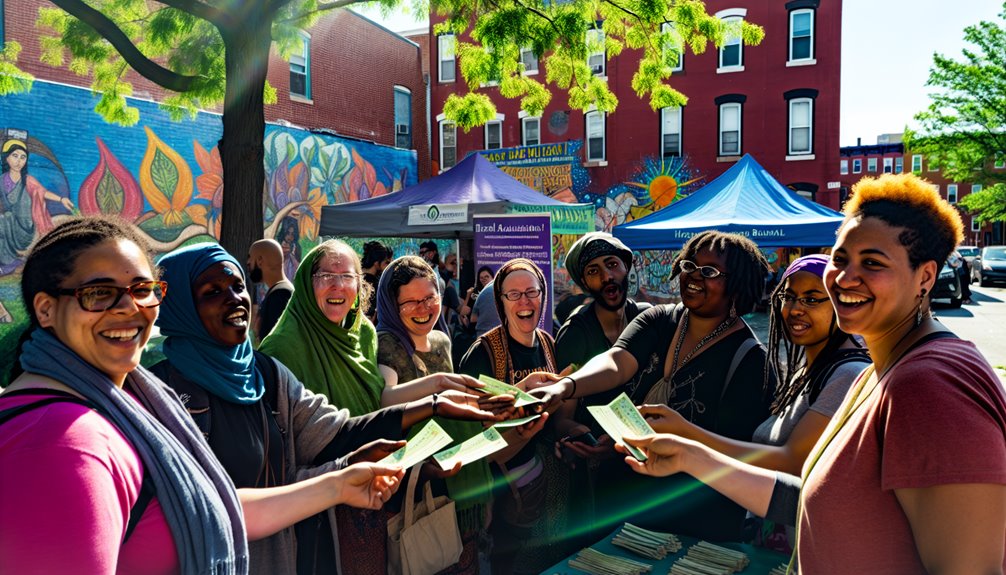
Although legalization opened doors, social equity cannabis grants aim to correct who gets to walk through them. You focus resources where harm was concentrated, advancing policy alignment between public health, workforce development, and neighborhood revitalization. These grants fund technical assistance, seed capital, and wraparound services that convert community narratives into measurable outcomes: higher minority-owned licenses, living-wage jobs, and reinvestment in impacted corridors. You use transparent metrics—grant-to-job ratios, local spend percentages, and recidivism reductions—to guide continuous improvement. By pairing capital with compliance support, you reduce barriers, crowd-in private investment, and build durable capacity. The promise is equity; the purpose is mobility and ownership.
Understanding Eligibility: Who Qualifies in Baltimore
Because eligibility determines who benefits, you’ll see Baltimore align criteria with Maryland’s social equity law and local impact priorities: residency or schooling in disproportionately impacted areas, ownership/control thresholds for qualifying individuals (e.g., 51%+ equity and decision-making), income caps tied to area median income, prior cannabis-related convictions eligible for consideration (not disqualifiers), and commitments to local hiring and community reinvestment. You’ll document residency verification, prove control through operating agreements, and show income with tax returns. Minority outreach matters for inclusive pipelines and applicant support. Strong compliance plans demonstrate readiness and integrity.
- Verify ties: transcripts, leases, affidavits.
- Prove control: cap tables, bylaws.
- Evidence reinvestment: hiring plans.
Funding Priorities: Where the Dollars Are Going
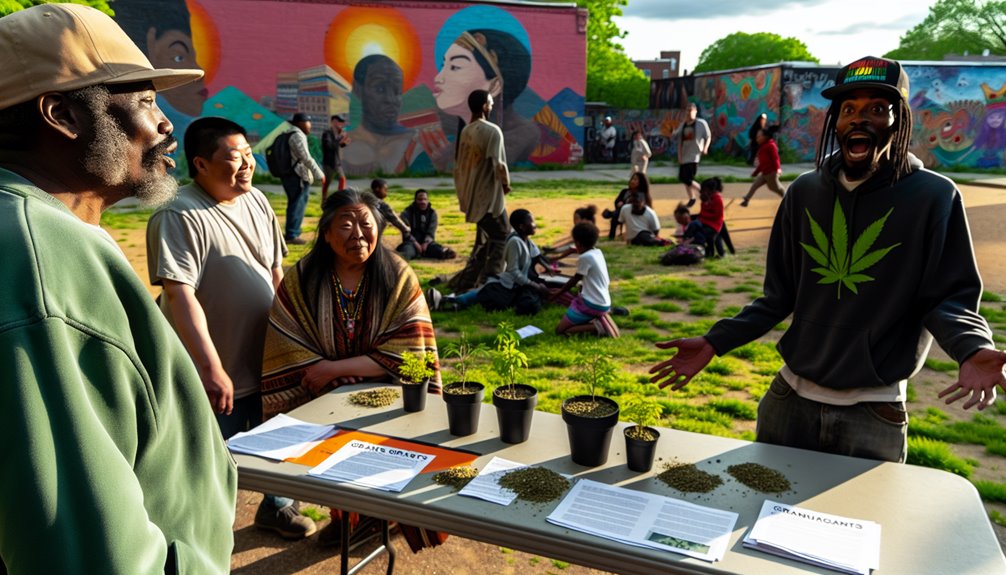
With eligibility set, the grants then target dollars where they can move outcomes fastest: startup capital and technical assistance for social equity licensees, workforce training for residents of disproportionately impacted areas, and neighborhood reinvestment tied to public safety and health metrics.
You’ll see allocations driven by measurable indicators: job placements, credential attainment, reduced vacancy, and improved trauma and overdose response times. Funds also support policy advocacy to remove municipal barriers and streamline licensing, while public outreach guarantees residents understand opportunities and timelines. You’ll prioritize projects with transparent budgets, matching funds, and quarterly reporting. Data dashboards track equity hiring, vendor diversity, and neighborhood outcomes, so you can pivot resources quickly and scale what works.
Building Businesses: Support for Equity-Owned Startups
Open growth by pairing capital with execution: grants back equity-owned cannabis startups through seed funding tied to milestones, embedded technical assistance, and procurement pathways that convert licenses into revenue. You get working capital plus guardrails: legal assistance to navigate compliance, marketing support to acquire customers, and coaching to meet performance benchmarks. Funds prioritize durable assets—inventory systems, packaging lines, and GMP upgrades—so you can scale responsibly and serve communities.
- Meet clear KPIs: on-time filings, compliant product launches, and audited books.
- Leverage shared services: pooled legal assistance and marketing support reduce unit costs.
- Access buyers: inclusive procurement opens shelf space and wholesale contracts.
Workforce Development and Training Pipelines
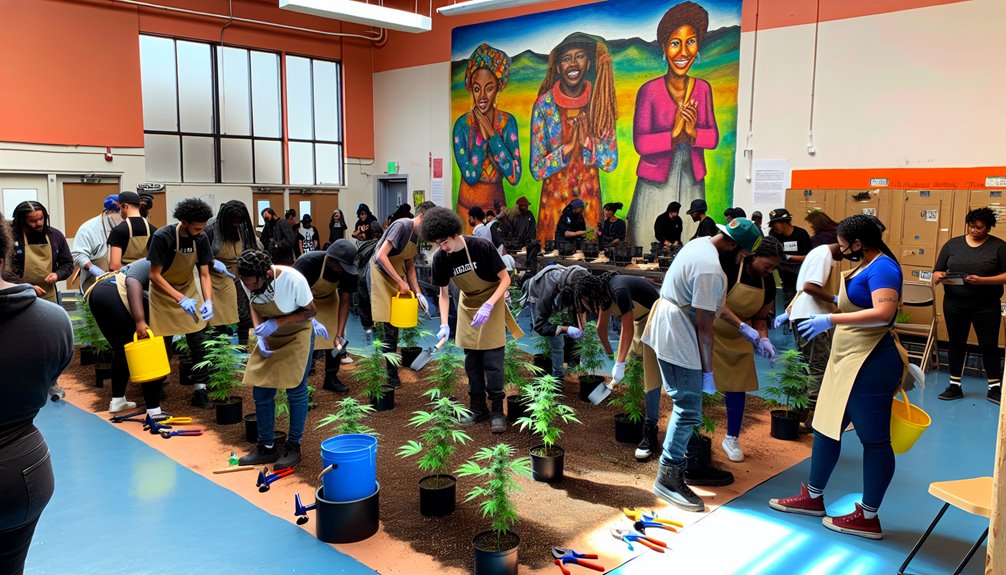
Capital only scales if people can run the operation, so the next lever is talent. You build equitable hiring pipelines by aligning grants with credentialed training, industry standards, and placement targets. Fund apprenticeships tied to cultivation, manufacturing, retail, and compliance roles; require paid mentorship, stackable certificates, and employer commitments to hire completers. Use data dashboards to track enrollment, completion, wage gains, and 6- and 12‑month retention. Prioritize neighborhood training hubs, mobile labs, and wraparound supports that reduce attrition. Incentivize apprenticeship programs through wage subsidies and tax credits. You’ll convert grants into living-wage jobs, reduce vacancies, and strengthen Baltimore’s cannabis workforce.
Reentry and Record-Clearing Pathways to Opportunity
Although legalization expands the market, justice only follows when you clear barriers to work. You can deploy cannabis grant dollars to scale expungement clinics, automate record review, and link outcomes to hires. Prioritize policies that seal eligible cases swiftly, fund legal navigators, and integrate employment navigation within reentry hubs. Track metrics: petitions filed, records cleared, time-to-clear, and post-clearance placement rates. Align employers with fair-chance standards and wage subsidies to convert interviews into jobs.
- Fund mobile expungement clinics with same-day filings and court fee coverage.
- Embed employment navigation in probation check-ins.
- Tie grant renewals to verified placements and retention.
Neighborhood Reinvestment and Community-Led Projects
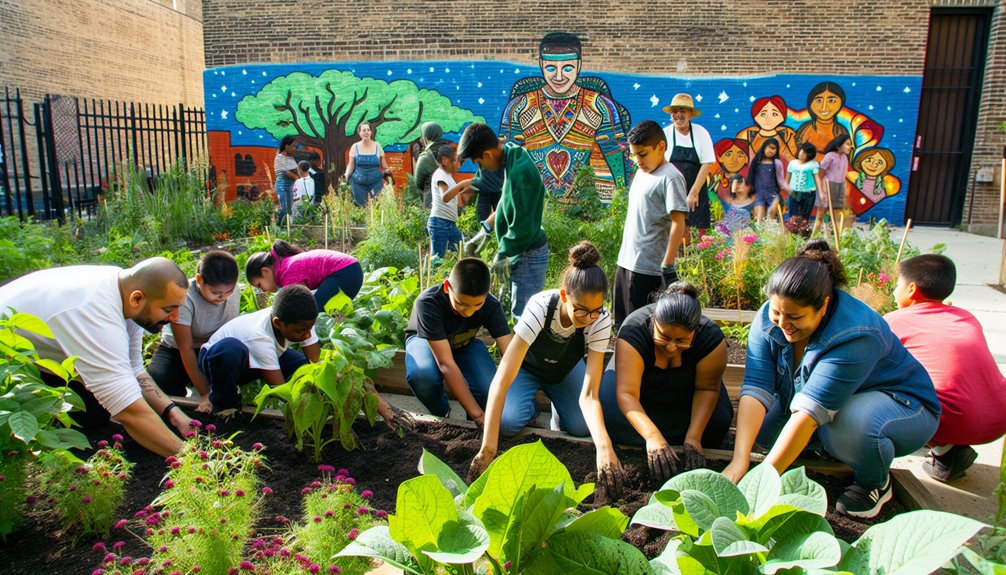
From block-level improvements to shared ownership models, direct cannabis revenues can seed neighborhood funds that residents govern. You can allocate grants through transparent criteria: equity indices, vacancy rates, and walkability scores. Prioritize small but catalytic projects—façade repairs, lighting, alley activation, and neighborhood greenways that link schools, parks, and transit. Pair every award with measurable outcomes: foot traffic, injury reductions, storefront occupancy, and local hiring. Require resident storytelling to document change and guide iteration. Incentivize cooperative ownership of corner properties to keep value local. Use participatory budgeting to rank proposals, and performance-based disbursements to assure delivery. Publish dashboards so neighbors track progress.
Barriers to Access: Capital, Compliance, and Capacity
Those neighborhood wins only scale if applicants can get in the door, yet three bottlenecks keep many Baltimore groups on the sidelines: capital, compliance, and capacity. You face high startup costs, complex rules, and thin staffing. To widen access, target practical enablers that de-risk entry and build durable skills.
- Capital: Pair grants with patient loans, credit-building tools, and financial literacy coaching to improve underwriting odds and cash-flow resilience.
- Compliance: Offer pro bono legal support, standardized SOPs, and audit-ready templates to simplify licensing and reporting.
- Capacity: Fund shared back-office services and stakeholder partnerships that deliver training, mentorship, and procurement pathways.
Measuring Impact: Metrics, Accountability, and Long-Term Mobility
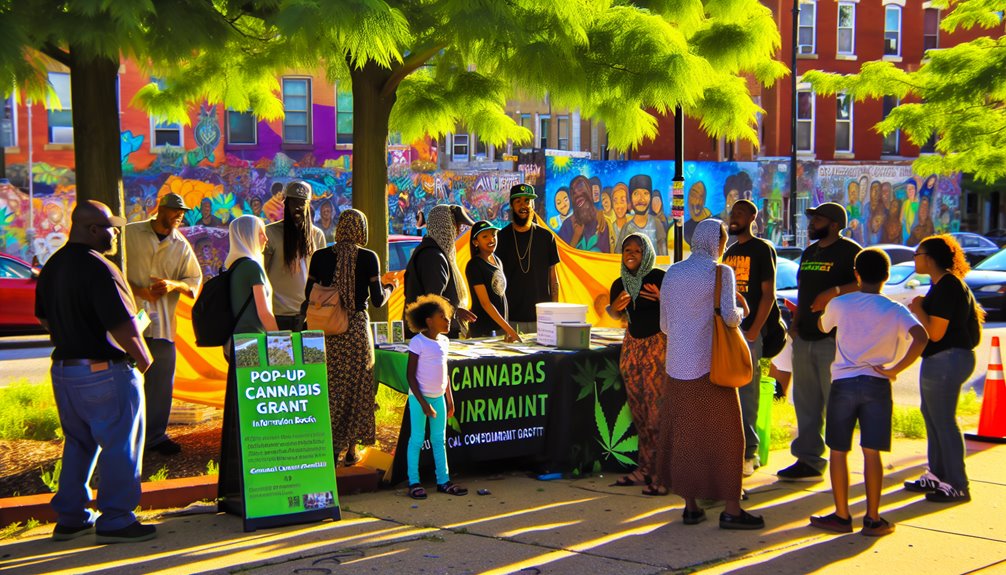
When grants flow into Baltimore’s cannabis ecosystem, you need rigorous metrics to prove what works, adjust quickly, and scale equity. Build data dashboards that track application throughput, licensing timelines, capital deployment, and job creation by ZIP code and demographic. Set outcome benchmarks for living-wage placements, retention at 12 and 24 months, business survival rates, and expungement completions. Require grantees to submit standardized quarterly datasets and publish results for community oversight. Tie continued funding to verified milestones and corrective action plans. Measure mobility with credit score gains, revenue growth, and household asset increases. Use longitudinal cohorts to confirm sustained impact and refine policy.
Conclusion
As we stand at the crossroads of opportunity and change here at Fells Point Cannabis Docs of Maryland, I can’t help but feel excited about the potential we have to make a real difference in our community. By focusing on equity-driven initiatives, we can truly uplift Baltimore, creating pathways to success for everyone involved. If you’re curious about how these grants can impact our neighborhoods or want to learn more about what we’re doing, I warmly invite you to visit us in person or give us a call at (410) 401-4200. We’d love to chat and explore how we can work together to foster a brighter, more equitable future for all!
